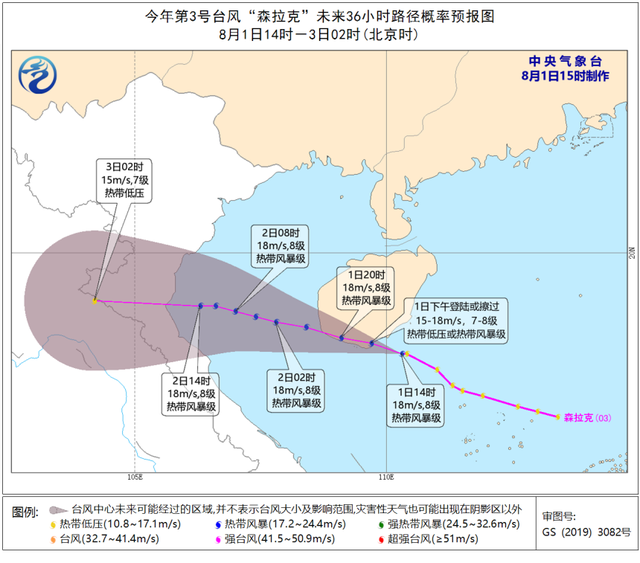Alerts issued as heavy rain forecast to hit
By HOU LIQIANG | CHINA DAILY | Updated: 2020-08-03 07:22

On Saturday, the national observatory issued a blue alert for Typhoon Sinlaku, the third typhoon of the year. Though it has left China as it heads northwest, it could still result in gales and downpours in some parts of the country.
From Sunday to Thursday, Guangdong and Hainan provinces and Guangxi Zhuang autonomous region will be hit by downpours, with total precipitation of up to 350 millimeters expected, the center said.
Following the only July without a typhoon in the Northwest Pacific and the South China Sea since 1949, China is expected to be hit by more typhoons than average this month, Xiang Chunyi, a senior engineer with the center, said.
Since 1949, an average of 1.9 typhoons have made landfall in China each August, but two to three are expected this month, she said.
Also on Sunday, the center issued a blue alert for severe convective weather, which is characterized by strong winds, hail, thunderstorms and brief but heavy rainfall.
The alert warned of torrential rains with hourly precipitation of 30 to 50 mm in 16 provincial-level regions, including Shandong, Heilongjiang, Jilin and Hebei provinces and Beijing in the 24 hours starting 2 pm on Sunday.
State Councilor Wang Yong has called for all-out efforts in flood control and post-disaster recovery to ensure the safety of people's lives and property.
Wang, also head of the State Flood Control and Drought Relief Headquarters, made the remarks during an inspection of flood control and disaster relief work in Anhui province on Friday and Saturday.
Noting that risks and hidden dangers are rising as high water levels in rivers, lakes and reservoirs threaten flood control infrastructure across the country, Wang stressed efforts to closely monitor flood conditions, strictly guard against safety risks and prepare for typhoons and heavy rainfall to prevent major disasters and casualties.
He also asked local authorities to enhance support for flood victims in terms of epidemic control, livelihood assistance, production, hygiene and compensation to restore business activity and daily life to normality as quickly as possible.
























